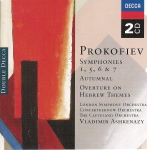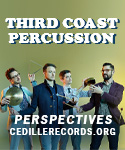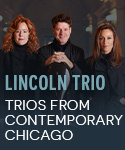Decca’s welcome reprisal of these Prokofiev symphonies comes amid a general dearth of finely recorded versions of the Sixth (considered the composer’s greatest but certainly not most popular) and Seventh. Other available recordings of these works either suffer from middling analog sound quality (Yevgeny Mravinksy in the Sixth, Nikolai Malko in the Seventh) or from drabness (Charles Dutoit in the Sixth) and plain bewilderment (Seiji Ozawa’s Berlin Philharmonic set). For years the clear recommendation has been Neeme Järvi’s masterful traversal with the Royal Scottish National Orchestra on Chandos, but the re-release of these barely-remembered Vladimir Ashkenazy performances gives that long-prized set a new run for its money.
First and foremost, Decca’s 1993 sonics are comparatively a league ahead of Chandos’ mid-1980s production, offering the rock-solid bass necessary for the myriad low brass passages and exposed bass drum parts. Second, The Cleveland Orchestra outclasses its Scottish brethren in general orchestral virtuosity, as well as in the various wind solos (exemplified by the elegant interchanges in the third movement of the Seventh and the silken clarinet playing throughout) and in the effortless and unforgettable playing of the principal trumpet.
Interpretively, Ashkenazy favors lean textures and taut rhythmic precision (a consistent feature of his conducting style) resulting in the occasional tendency to let the music’s tension slacken (compare the opening of Järvi’s more urgent reading of the first movement in the Seventh). However, in the swifter sections, such as the Seventh’s frenzied second-movement Piu animato and the same symphony’s lively fourth movement, Ashkenazy lets it all hang out, and listeners should brace themselves for quite a ride.
The more famous selections–the First and Fifth symphonies, performed by the London Symphony Orchestra and the Concertgebouw, respectively–are never less than satisfying. Nothing revelatory takes place in the well-known “Classical” Symphony, other than customary clean execution. The Fifth Symphony has many competitors (Karajan, Järvi, Slatkin, and Maazel, among the better ones) but Ashkenazy’s rendition stands up well, with genuinely exuberant playing from the Amsterdam forces. In the crushing first-movement climaxes, audiophiles also will be pleased with the substantial weight in the percussion and the clearly audible tam-tam crashes that can literally make or break recordings of this work. The fillers include the composer’s early mysterious Autumnal fragment and an idiomatic reading of the chamber version of Overture to Hebrew Themes, both incidental and somewhat out of place among these symphonic monuments. [8/21/2002]
































